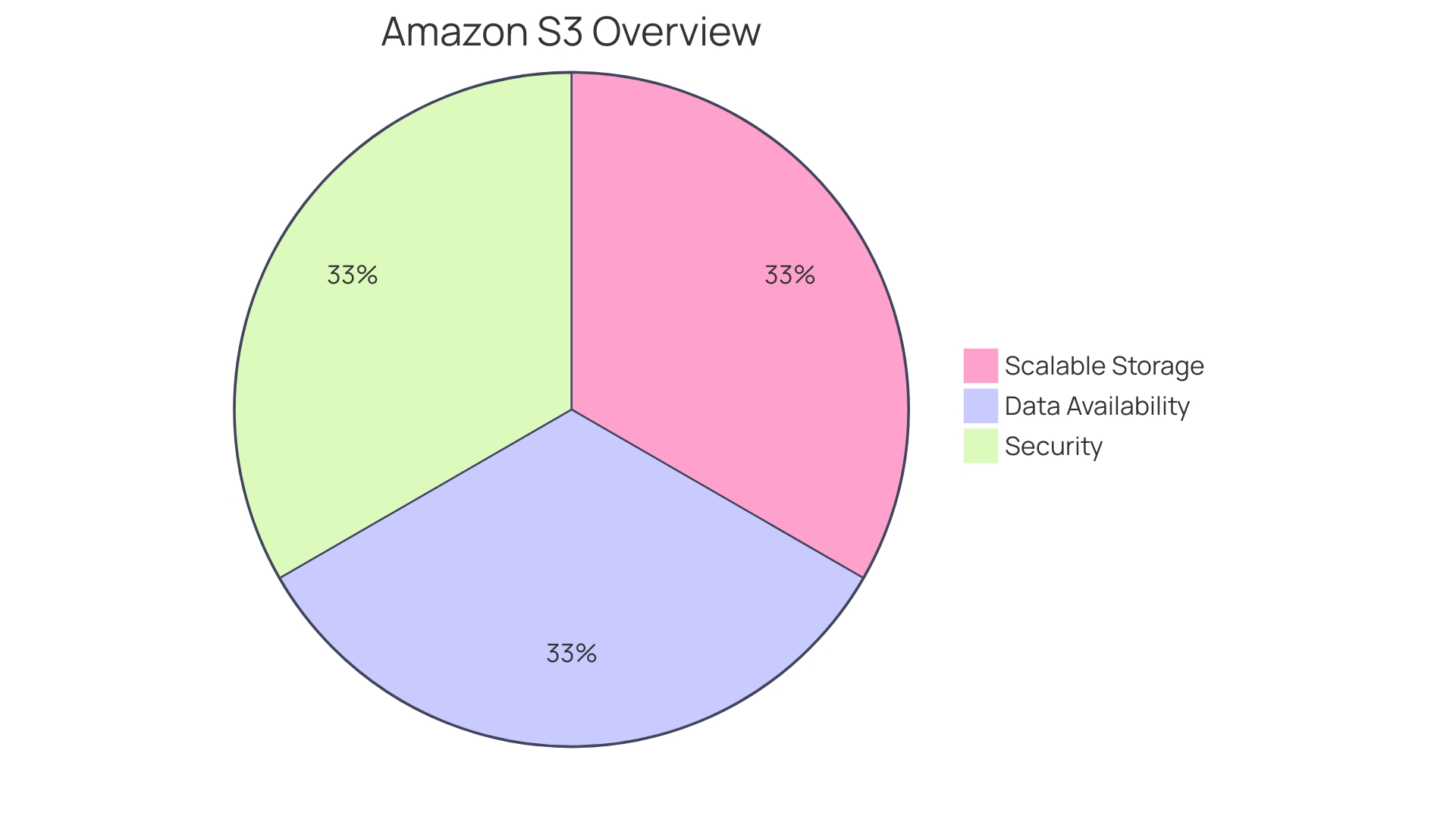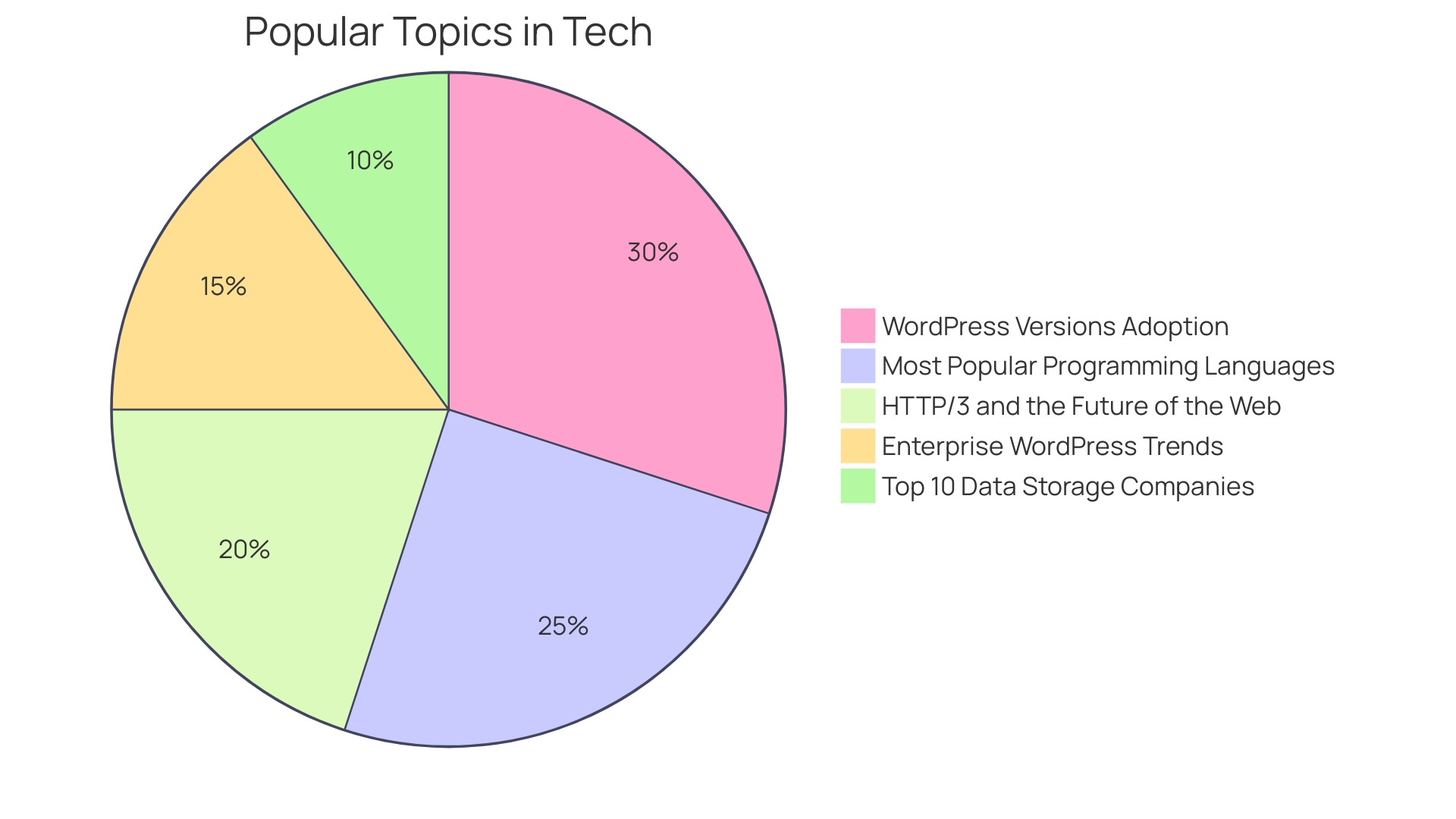Introduction
Launching a website on Amazon Web Services (AWS) requires careful preparation and an understanding of the essential services provided by AWS, such as S3, Route 53, and CloudFront. In a world where businesses are increasingly investing in their website's performance, it is crucial to establish a solid web presence. By taking charge of scalability, reliability, and cost-effectiveness, hosting and managing your website on AWS empowers you to navigate the fast-paced software development landscape with confidence.
In this article, we will explore the prerequisites for hosting a website on AWS, including registering a domain, setting up DNS services, deploying static and dynamic websites, content delivery optimization, load balancing, security measures, caching strategies, backups and storage, continuous deployment workflows, and cost considerations. By leveraging AWS's suite of services, you can create a fast, reliable, and scalable web presence that sets the stage for your business's growth and success.
Prerequisites for Hosting a Website on AWS
Launching a website on Amazon Web Services (AWS) is a straightforward process, but it requires some preparation. As businesses grow, like Dunelm with its significant digital revenue, or Chess.com with its millions of daily games, the need for a robust and scalable web infrastructure becomes paramount. AWS offers a suite of services, including S3 for storage, Route 53 for DNS, and CloudFront for content delivery, which are essential for deploying a fast, reliable, and scalable website.
To get started, you'll need an AWS account, which you can create on the AWS website. Take advantage of the free tier for initial setup and testing. Familiarize yourself with AWS S3, Route 53, and CloudFront, as these services will play a critical role in your website's deployment.
The importance of a solid web presence is underscored by the fact that 43% of small businesses plan to invest in their website's performance in 2023. With a significant portion of the internet's 1.11 billion websites remaining inactive, ensuring your website is well-maintained and performs efficiently is crucial for standing out.
Embracing the responsibilities of launching and managing your website on AWS, like the developers at small to medium-sized companies, empowers you to take charge of scalability, reliability, and cost-effectiveness. This proactive approach is vital in today's fast-paced software development world, where the right infrastructure decisions can significantly impact your business's growth and success.

Registering a Domain on AWS
When launching a website, securing the right domain name is crucial. It not only serves as your digital address but also enhances brand recognition and credibility. Amazon Web Services (AWS) now offers an expanded selection of over 369 Top-Level Domains (TLDs), including unique extensions such as .beer, .bio, and .fun, tailored to various industries and interests. The recent addition of domains like. Work and. Law exemplifies AWS's commitment to providing specific, memorable online identities for professionals and businesses alike.
Choosing a domain name involves careful consideration. It's not just about picking a name; it's about finding the one that's available, resonates with your brand, and contributes to a higher search engine ranking. Remember, a domain name is more than an address - it's the first point of contact with your audience. Opt for one that's easy to spell and pronounce, and consider turning it into a professional email address to further establish your business's online presence.
Selecting a domain registrar is a pivotal decision. It's not just about the cost but also the value they offer, from user experience to customer support. Domain registrars like GoDaddy, boasting over 20 million customers, exemplify the importance of choosing a provider that understands the needs of a growing business and offers the tools to thrive online. With AWS, the process of checking availability and registering a domain is streamlined, ensuring that your online journey starts on the right foot.
Understanding the significance of a domain in today's digital landscape is essential. It's a digital asset that can influence customer perceptions and service. The. Ae domain's journey, for instance, showcases the potential of a well-chosen domain to play a significant role in a region's digital identity. As you embark on your website's creation, let your domain name set the stage for a strong, recognizable, and successful online presence.
Setting Up DNS Services with Amazon Route 53
To seamlessly connect your registered domain to the AWS ecosystem, employing Amazon Route 53 is imperative. The process involves four distinct steps that, when executed properly, ensure a smooth integration. Begin by establishing your website's presence on an EC2 instance, which involves selecting the right specifications for your virtual machine. This will serve as the backbone of your website or web application.
Following the EC2 setup, Route 53 comes into play for DNS management. This highly available and scalable service is fundamental for directing users to your internet applications. With Route 53, you'll update the nameservers provided by your domain registrar, effectively pointing your domain to the AWS resources.
After updating the nameservers, it is a waiting game as you anticipate the DNS changes to propagate across the internet. This propagation is a testament to the Internet's expansive reach and its rapid growth, with Cloudflare's 2023 Year in Review highlighting a 25% increase in global internet traffic, reflecting the critical nature of efficient DNS management.
The importance of a well-executed DNS setup cannot be overstated, as it underpins the user experience by ensuring that your audience can access your site without interruption. Amazon Route 53's design excellence and scalability are a result of AWS's substantial investment in its DNS service, making it a superior choice in the market. By following these steps, your domain will be well-integrated into AWS, contributing to a fast, reliable, and scalable web presence.

Hosting a Static Website Using AWS Amplify and Amazon S3
Deploying a static website has become a cornerstone for businesses seeking a robust online presence. Amazon Web Services (AWS) offers a seamless and scalable solution for this through services like AWS Amplify, Amazon S3, and Route 53. Beginning with Amazon S3, is object storage capabilities allow you to store the static files necessary for your website. This service is not only efficient but also integrates fluidly with other AWS offerings. Additionally, Route 53 serves as a reliable DNS web service to effectively connect user requests to the infrastructure running in AWS.
To enhance the reach and performance of your static site, AWS Amplify acts as a development platform that streamlines the setup process. Its integration with Contentful, an AWS partner, further simplifies content management, allowing you to utilize Contentful's blueprint for your content storage. With over 43% of small businesses planning to improve their website performance in 2023, utilizing AWS's hosting solutions aligns perfectly with current market trends, emphasizing the importance of an optimized and accessible online footprint.
AWS's commitment to innovation and efficiency is highlighted by its role in enabling organizations to leverage machine learning (ML) and AI for critical tasks. As an example, AWS's ML tools have been instrumental in sifting through millions of files to detect instances of abuse much faster than humanly possible, showcasing the power of AWS services beyond website hosting.
In a digital landscape where approximately 1.11 billion websites exist, and a growing percentage of businesses recognize the significance of a strong online presence, leveraging AWS's suite of services for hosting static websites is not only strategic but also a reflection of modern, sustainable architecture. This approach ensures that your static website will not only be secure and reliable but also poised for future growth and technological advancements.

Deploying a Dynamic Website on AWS Using Amazon EC2 and RDS
Deploying dynamic websites that necessitate server-side processing and a database is a task well-suited for Amazon Web Services (AWS). AWS's comprehensive suite of services, including Amazon EC2 for scalable computing capacity and Amazon RDS for a managed database experience, provides the necessary tools to build robust, scalable applications. When setting up a dynamic website on AWS, you'll have access to a vast array of resources and services that can mirror a full production environment, such as customizable virtual machines and fully managed relational databases.
By harnessing the market-leading capabilities of AWS, developers can create cloud-native applications that are both resilient and adaptable to changing needs. For instance, the success of platforms like Chess.com, which supports millions of users and games daily, is testament to the scalability and reliability that AWS's infrastructure offers. Organizations of all sizes, from small businesses to large enterprises, are leveraging AWS to scale at their own pace, enjoying the flexibility and affordability that cloud services bring to the table.
Moreover, the ease of use and robust documentation provided by AWS means that whether you're a seasoned cloud professional or a newcomer to the cloud ecosystem, you can navigate the deployment process with confidence. AWS's commitment to extensive learning resources simplifies the onboarding process and enhances the depth of knowledge available to users. This, coupled with AWS's reputation for safe and secure hosting solutions, makes it an ideal choice for businesses aiming to establish a strong online presence with dynamic websites.
Content Delivery with Amazon CloudFront
Amazon CloudFront, AWS's content delivery network (CDN), is pivotal for websites aiming to provide fast and reliable user experiences. The efficacy of a CDN like CloudFront is underlined by its ability to swiftly deliver content through a global network of data centers, strategically placed to minimize latency and maximize speed. This is particularly important for high-traffic websites, such as Dunelm Group plc, which garners over 400 million sessions annually and relies on an optimized digital platform for significant revenue generation. Similarly, Chess.com, with its vast user base of over 150 million, leverages CDN technology to ensure consistent and quick access to its online chess platform, enhancing user engagement across different geographies.
Improving web performance transcends mere loading speed; it directly influences user satisfaction, search engine rankings, and conversion rates. Optimizations such as image compression, code minification, and efficient script loading are crucial, yet the backbone of performance lies in selecting robust hosting and CDN services. CloudFront offers such optimizations by caching content closer to users, reducing the need for data to travel long distances, which not only quickens load times but also ensures content availability during peak traffic or infrastructure disruptions.
Web performance metrics are vital in identifying areas for enhancement, and with the ever-evolving online landscape, staying current is key. CloudFront's continuous updates and innovations exemplify this, as reflected in the latest services and features announced during industry events such as Cloudflare’s Birthday Week.
In sum, integrating Amazon CloudFront as part of your web delivery strategy ensures not only the resilience and speed of your site but also contributes to a superior end-user experience, reinforcing the importance of CDNs in today's digital ecosystem.
Load Balancing and Auto Scaling with Elastic Load Balancing
To effectively manage high traffic volumes and maintain optimal website performance, it's crucial to implement smart load management strategies. AWS offers Elastic Load Balancing (ELB), a service that automatically distributes incoming application traffic across multiple targets, such as Amazon EC2 instances, containers, and IP addresses. ELB can handle the varying load of your application traffic in a single Availability Zone or across multiple Availability Zones.
ELB offers three types of load balancers that provide the flexibility required for various scenarios: Application Load Balancer, ideal for HTTP and HTTPS traffic; Network Load Balancer, perfect for ultra-high performance and static IP addresses for TCP traffic; and Classic Load Balancer, which provides basic load balancing at both the request level and the connection level.
For example, Chess.com, a leading platform for chess players with over 150 million users, implemented a robust IT infrastructure to handle millions of games daily. The company leveraged cloud solutions to ensure stable and responsive service globally. Similarly, Uber restructured its platform to enhance the efficiency of its stateless services, ultimately achieving significant cost savings.
Recent advancements like Amazon S3 Express One Zone offer a high-performance storage solution that supports millions of requests per minute. Coupled with the power of Graviton processors, AWS provides an environment where load balancing is not just a necessity but a pathway to improved efficiency and cost management.
High availability is a cornerstone of customer satisfaction and business continuity. In this digital era, ensuring that web applications are consistently accessible is paramount. Load balancing, a concept likened to evenly distributing guests to waiters in a restaurant, ensures that no server is overwhelmed, translating to an uninterrupted user experience.
By configuring a load balancer, you can ensure that your web applications remain resilient in the face of varying traffic levels and potential disruptions, thereby maintaining high availability and delivering a seamless user experience.

Securing Your Website with AWS WAF, Security Groups, and AWS Shield
Ensuring the security of websites and applications is an imperative facet of modern web hosting. AWS provides robust tools to fortify your website against cyber threats. AWS WAF (Web Application Firewall) empowers you to monitor HTTP and HTTPS requests directed at your web application and allows you to control access based on conditions you specify. These conditions include IP addresses, HTTP headers, HTTP body, URI strings, SQL injection and cross-site scripting. Deploying AWS WAF rules can protect your website from common attack patterns.
Moreover, the use of security groups acts as a virtual firewall for your server to control inbound and outbound traffic. Security groups are highly customizable, which means you can set them up to allow traffic from trusted IP addresses and block the rest, minimizing the risk of unauthorized access.
In addition to AWS WAF and security groups, AWS Shield provides managed Distributed Denial of Service (DDoS) protection. It safeguards your website against the most common and frequently occurring DDoS attacks, thereby maintaining website availability and performance.
To illustrate the effectiveness of AWS's security measures, consider the case of Chess.com, a platform hosting over ten million daily chess games. Head of Infrastructure James Kelty highlighted the importance of a robust IT infrastructure in providing a seamless experience to their 150 million users. AWS's security solutions play a significant role in protecting platforms like Chess.com from malicious activities.
The importance of these security measures is underscored by recent cybersecurity research. Analysis of ninety-five billion events revealed that only a small fraction were malicious, but the consequences of these incidents can be significant. Artificial intelligence (AI) has been instrumental in identifying and analyzing threats, highlighting the need for advanced security tools like those offered by AWS.
In the realm of zero-day vulnerabilities, AWS has been recognized for its exceptional response to vulnerability reports, demonstrating its commitment to security and responsible disclosure practices. This approach is essential in preventing widespread attacks until vulnerabilities are patched.
Caching and Performance Optimization with Amazon ElastiCache
Amazon ElastiCache provides a solution to enhance your website's performance through effective caching strategies. By leveraging ElastiCache, you can significantly reduce the time it takes for your pages to load, which is crucial for e-commerce platforms dealing with high traffic volumes and extensive product inventories.
Optimizing your website's performance begins with decreasing the page generation time. This involves minimizing the delay from when a request is made to when the server delivers the HTML code required for the browser to start loading the page's resources. Utilizing full-page caching can drastically cut down this time. With ElastiCache, frequently accessed data is stored temporarily in a cache, enabling quicker retrieval on subsequent requests.
A case in point is Dunelm Group plc, the UK's leading homewares retailer, which experiences over 400 million sessions annually on their digital platform. As they scaled their operations, the need for a robust infrastructure capable of supporting their growth became evident. They adopted a strategy that included a Django-based technical stack and a focus on SEO by analyzing competitor traffic and optimizing content accordingly.
For businesses like Dunelm, where e-commerce significantly contributes to revenue, ensuring a seamless user experience is paramount. This is where caching plays a pivotal role. By storing data in cache storage closer to the processing unit, such as the frontend or backend, the burden on databases is alleviated. This is especially important when serving long lists of products, which can otherwise add excessive load on the database and potentially max out server capacity.
Object caching is another essential aspect, albeit less common than full-page caching. It allows for the storage of frequently queried and processed data, such as user sessions or API responses, in a fast-access memory store like Redis, which is widely supported by hosting providers.
In sum, incorporating Amazon ElastiCache into your website infrastructure is a strategic move that can lead to improved performance, user satisfaction, and ultimately, business success. By implementing full-page and object caching, you can ensure your website remains responsive and efficient, even under the strain of millions of orders and vast amounts of data.
Backups and Storage with Amazon S3
Ensuring the safety and security of your website's data is paramount in today's digital landscape, particularly for WordPress users who enjoy a platform known for its user-friendly interface and robust features. Amazon Simple Storage Service (Amazon S3), a scalable and secure object storage service, is an excellent solution for safeguarding your data. It offers industry-leading data availability, security, and performance, which is why it is a preferred choice for backups and storage.
The significance of reliable backup and recovery systems cannot be overstated. Data loss due to hardware malfunctions, such as bit rot, or cyber-attacks, like ransomware, poses a severe threat. Amazon S3 addresses these concerns by providing a remote data storage solution that ensures uninterrupted access to information and robust protection against data loss.
In educational and research institutions, the ease of access to large volumes of data is essential. Cloud storage, such as Amazon S3, facilitates this by making data accessible from anywhere without the delays associated with cold storage solutions. Moreover, the diverse and heterogeneous nature of data in fields like life sciences demands a storage solution that can accommodate different file types, data sets, and reports in a structured manner that supports logical organization and retrieval.
As organizations seek cyber insurance to mitigate potential liabilities from cyber threats, having off-site or immutable backups can be a critical requirement. Amazon S3's reliability and scalability make it an ideal choice to meet these prerequisites. It also provides the necessary infrastructure to store and manage various assets required by a public website, ensuring content is quickly, securely, and scalably accessible to users across the internet.
Amidst the evolving tech landscape, Amazon's commitment to innovation is evident in its enhancements to Alexa and smart home experiences. While not directly related to Amazon S3, this reflects the company's broader strategy to streamline digital interactions and data management, reinforcing the importance of staying ahead in technology investment and implementation.
By leveraging Amazon S3 for your WordPress website, you are not only protecting vital data but also positioning your business for success with a reliable plan B during turbulent times. Whether it's a natural disaster or a technical failure, having backup cloud storage like Amazon S3 ensures that your data remains safe and your online presence uninterrupted.

Continuous Deployment and CI/CD Workflow with AWS Amplify
Expanding the capabilities of software development and deployment, AWS Amplify stands out as a robust platform that supports Continuous Integration (CI) and Continuous Delivery/Deployment (CD). These practices are paramount in today's fast-paced development environment, aiming to reduce costs, enhance speed, and minimize the risks associated with frequent application updates. AWS Amplify facilitates a streamlined process for building, testing, and releasing software, enabling developers to maintain a codebase that’s ready for production at any moment.
The integration of Vite and React in project development exemplifies the efficiency of AWS Amplify. By choosing these lightweight, fast-loading technologies, developers benefit from a simple and rapid setup for static web pages that are immediately deployable. This approach not only enhances the performance but also leverages the automated deployment capabilities of AWS Amplify, ensuring that every code change is meticulously tested and seamlessly transitioned to live environments.
Moreover, the automation of various stages of software development, such as building the software, resolving dependencies, and creating executables, is complemented by comprehensive testing and deployment across different environments. Monitoring and logging are integral components of this process, providing real-time problem detection and a historical record of events.
As emphasized by recent announcements at AWS re: Invent, AWS services, including AWS Amplify, are continually refined to support the evolving needs of developers. This dedication to innovation underlines the significance of AWS Amplify in facilitating continuous deployment, where updates are directly pushed to production without the need for manual approval, reflecting a maturity in software testing and deployment automation that delivers immediate value to users.

Cost Considerations and Billing for AWS Services
Navigating AWS hosting and its associated costs is crucial for optimizing your website's financial footprint. AWS offers a spectrum of services that cater to different needs, from essential hosting solutions to advanced, serverless options like AWS Lambda. While Lambda's event-driven model provides scalability and cost-effectiveness, it's imperative to understand how these benefits align with your business requirements.
Hosting choices range from shared environments to dedicated servers, with costs influenced by the provider, the service tier, and your site's demands. As we analyze these options, consider GoDaddy's seven-layer methodology for efficiency, which underscores the importance of a structured approach to resource and data management.
Moreover, recent news highlights AWS's commitment to customer choice, offering free data transfers to facilitate switching providers, challenging restrictive software licensing practices. This development underscores the need for strategic financial and technology collaboration within organizations.
For effective cost management, AWS underscores the importance of integrating finance and technology teams. CFOs and technology leads must work in tandem, understanding cloud consumption models and linking technology spend to business outcomes. This collaboration is vital in the pursuit of cost-aware workloads that drive business success while minimizing expenses.
In summary, choosing the right AWS hosting services requires a deep dive into cost considerations, with a focus on collaboration, efficiency, and strategic planning to ensure a robust and financially optimized web presence.
Conclusion
Launching a website on AWS empowers businesses with scalability, reliability, and cost-effectiveness. AWS's essential services like S3, Route 53, and CloudFront ensure a solid web presence in the fast-paced software development landscape.
Choosing the right domain name is crucial for brand recognition. AWS offers a wide selection of TLDs tailored to various industries. Selecting a domain registrar that understands business needs is pivotal.
Integrating Amazon Route 53 seamlessly connects registered domains to the AWS ecosystem. Its design excellence and scalability make it a superior choice for DNS management.
Deploying static websites with AWS Amplify and Amazon S3 provides a seamless and scalable solution. Storing static files on S3's object storage and utilizing AWS Amplify align with market trends for optimized online presence.
For dynamic websites, deploying on AWS using Amazon EC2 and RDS ensures scalability and reliability. AWS's flexibility and affordability benefit platforms like Chess.com.
Amazon CloudFront, AWS's CDN, delivers fast and reliable user experiences. Its global network of data centers enhances user satisfaction and search engine rankings.
Implementing smart load management with Elastic Load Balancing effectively handles high traffic volumes. ELB ensures high availability and a seamless user experience.
AWS's robust security tools like AWS WAF, security groups, and AWS Shield fortify websites against cyber threats.
Amazon ElastiCache enhances website performance with effective caching strategies, reducing page load times for a seamless user experience.
Amazon S3 offers scalable and secure backups and storage, ensuring uninterrupted access to data.
AWS Amplify supports CI/CD, streamlining software development and deployment processes.
Navigating AWS hosting costs requires collaboration between finance and technology teams for cost-aware workloads.
By leveraging AWS's suite of services, businesses can create a fast, reliable, and scalable web presence. AWS's comprehensive offerings and commitment to innovation make them a trusted authority. Embrace AWS's expertise to navigate the software development landscape with confidence.
Start building your fast, reliable, and scalable web presence with AWS today!




